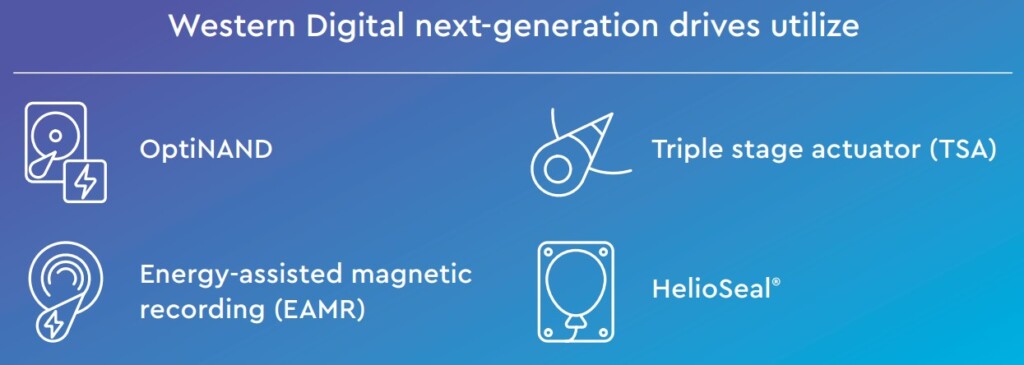
Western Digital Launches New Type of 20 TB OptiNAND HDD Disk
- Western Digital introduces the first of a new line of HDD products that are expected to revolutionize performance.
- The new drives will use NAND storage smartly to increase speed and data write reliability.
- The manufacturer claims that reaching 50 TB of capacity before the end of the decade is a realistic target.
Western Digital has launched a new mechanical hard drive that uses the OptiNAND flash memory technology and features nine platters of 2.2 TB each, reaching a total capacity of almost 20 TB. The new drive’s flash memory is an integrated EFD sitting on the circuit board, and it also features a 3D TLC UFS flash memory of unknown technical specs. WD is going for a highly reliable “smart” mechanical drive that offers high performance. To clarify, this is not a hybrid drive.
The nine platters - or disks, if you prefer - are read by a magnetic head that uses a three-stage actuator drive for higher precision and uses ePMR (Energy Assisted Vertical Recording Technology). The SoC control chip of the disk is proprietary and was developed internally by Western Digital.
In numbers, Western Digital claims its new HDD product can flush 100 MB of write cache data into iNAND, going 50 times higher than what the previous generation could achieve (2 MB). This figure is very important for those who care about reliability in cases of data emergency or sudden power cuts. Thanks to firmware optimizations that reduce the drive’s latency as well as the need for ATI refreshes and write cache flushes in WCE mode, the new HDD performs better than anything else of this type.
As Western Digital explains, HDDs are ideal for applications where areal density and cost-effectiveness are crucial elements. The OptiNAND technology is enabling them to create disks that store massive quantities of data while enabling quick real-time access, freeing rotating media space for user data. One of the issues that WD’s engineers were facing as the areal density increased was interference on adjacent tracks - and this is also resolved through OptiNAND as all write data is now stored in the iNAND at the sector level, so the refreshes don’t hurt performance.
As impressive as all of this may sound, this is the first generation of a range of products to follow in the future. Western Digital believes it is possible to reach 50 TB of capacity before the end of the decade by optimizing all of the aforementioned systems and introducing new ones. It is a game of delicate balance between increasing the capacity density while maintaining low data corruption rates and the tricks deployed for the latter always threaten performance. That said, pushing forward won’t be easy, but by re-imagining the use of DRAM, Western Digital has unlocked a new branch of possibilities.








